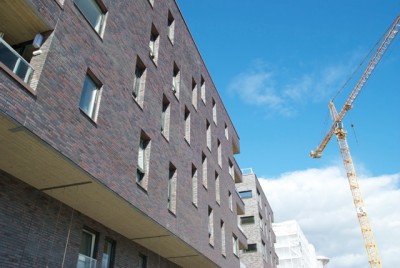Housing prices in Norway fell an average of 1.3 percent from October to November, marking the third month in a row of price declines of over 1 percent. After years of rapidly increasing prices, the decline illustrates a big change in housing market dynamics, but many see it simply as a classic and even welcome “correction.”

“It would surprise me very much if this develops into a major price decline in the year ahead,” said Christian Vammervold Dreyer, the leader of the national real estate brokers’ association that released the new housing market sale figures on Monday.
The figures had been greatly anticipated after weeks of media coverage in Norway that has chronicled a decline in the number of prospective buyers attending visninger (open houses) and, as late as Monday morning, reports on national broadcaster NRK that Norwegian banks have tightened their lending policies. It’s much harder now, reported NRK, for first-time buyers to secure home loans, even though spokesmen for several banks claimed they’ve made no major changes in qualification criteria.
With interest rates still at record low levels, it shouldn’t be too difficult for borrowers to qualify for a mortgage. The banks, however, do face higher capital requirements and need to make sure borrowers are prepared and able to handle higher payments if interest rates climb.
Priced out of the market
The biggest problem facing homebuyers in Norway, however, is the price level. After years of annual price hikes of as much as 6-10 percent in some local markets, especially Oslo and other cities, newspaper Dagens Næringsliv (DN) could report recently that the average price of a 70-square-meter (700 square foot) flat in Oslo is now the equivalent of eight years of the average income level. In 1995, average flat prices were around three times average income levels.
Since most banks won’t lend more than three- to four times a borrower’s income, it’s become almost impossible for single persons to enter the housing market on their own. DN also has reported that fully 40 percent of first-time buyers get financial help from their parents, many of whom borrow against their own equity to help their offspring buy a home instead of renting (not least since rent levels also have nearly quadrupled in some cities in the past 20 years). DN reported that 25 percent of first-time buyers get more than NOK 500,000 (around USD 82,000) in capital assistance from their families.
Not only does that raise concerns of “class differences” in egalitarian Norway, it illustrates the affordability problem: NRK reported that housing price increases have far exceeded salary increases during the past 10 years. While inflation has otherwise been low in Norway and pay raises solid, employees’ paychecks haven’t been able to keep up with the jump in housing prices. The price of a three-room flat in Oslo’s fashionable Frogner district, for example, has risen 547 percent in less than 20 years. Salaries have merely doubled.
Nervous sellers
Monday’s news of another price decline can therefore be seen as good news, even though it makes sellers nervous. They’ve had to lower their price expectations, at any rate, and economists have already been advising homeowners to sell their existing properties before committing to buy a new place. That in itself is a major change in housing market attitudes, since many sellers and brokers have for several years simply taken for granted that single-family homes and condominiums sell quickly. That’s no longer true.
Economists disagree on whether the housing market is in for a long-term price decline. Dreyer of the brokers’ association Eff (Eiendomsmeglerforetakenes Forening) points to pent-up demand and limited supplies of homes on the market, suggesting that prices will edge up again soon. And he stresses how housing prices have risen out of proportion with other prices and incomes, up 29 percent overall over the past six years, so the current decline isn’t all that dramatic.
“We’ll enter 2014 with greater uncertainty about housing prices than we’ve had for many years,” he conceded, noting that condominiums (flats) have registered the biggest price declines.
Others predict the affordability issue has become so severe that prices will continue to decline until more buyers can buy. But in the long term, most agree residential real estate prices will appreciate. Politicians are being urged to help boost affordability, by taking steps to keep interest rates low, among other things. Rune Bjerke, chief executive of Norway’s biggest bank DNB, also urged more incentive-based savings programs where first-time buyers can receive tax deductions by setting aside money in special accounts. His bank, however, has been among those accused of raising interest rates to meet new capital requirements, and ending up with windfall profits.
newsinenglish.no/Nina Berglund

